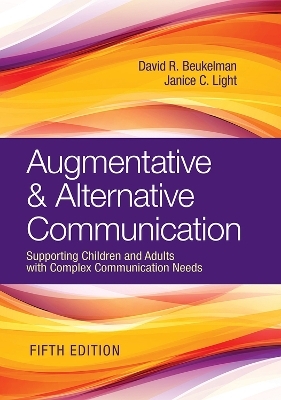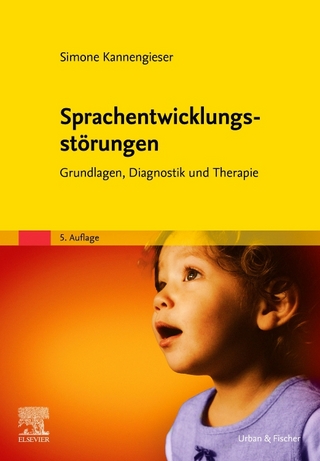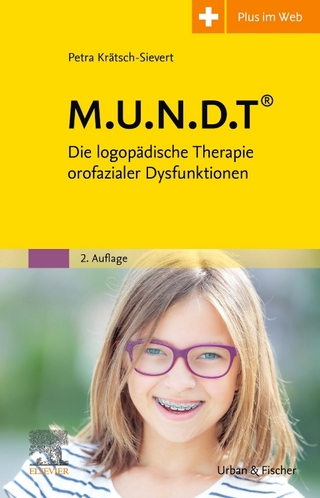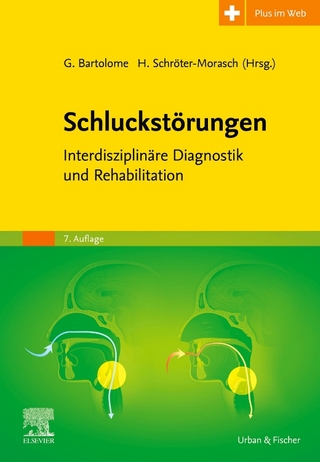
Augmentative & Alternative Communication
Brookes Publishing Co (Verlag)
978-1-68125-303-9 (ISBN)
The authoritative text on augmentative and alternative communication, this classic bestseller is now in its fifth edition—revised and updated for a new generation of SLPs, teachers, occupational therapists, and other professionals in clinical and educational settings. Partnering with a team of distinguished contributors, renowned experts David Beukelman and Janice Light deliver today's most comprehensive, up-to-date introduction to AAC interventions and technologies for children and adults with complex communication needs. Future service providers will get in-depth coverage of essential AAC topics, enhanced by helpful study questions, valuable perspectives from people who use AAC, and case examples that illustrate key principles.
Significantly expanded with new chapters on critical topics, more practical information on how AAC systems work, and new online companion materials, this definitive text will expertly prepare readers to support communicative competence–and quality of life–for children and adults with complex communication needs.
WHAT’S NEW
Professionals will prepare for their work in the field with critical new information on:
Collaborating with family members and other communication partners
Making the most of mobile technologies and AAC apps
Selecting an AAC system and tailoring it to individual needs
Working effectively with families from diverse cultural backgrounds
Supporting inclusion across the lifespan (including education, employment, and community life)
Ensuring efficient patient-provider communication in medical settings
Providing communication supports to people with autism spectrum disorder
PLUS: Enhance your teaching with a package of online companion materials, including a resource guide to help practitioners and students learn more about AAC; sample responses to chapter study questions; and a sample syllabus.
David R. Beukelman, Ph.D is the Barkley Professor of Communication Disorders at the University of Nebraska-Lincoln, Director of Research and Education of the Communication Disorders Division, Munroe/Meyer Institute of Genetics and Rehabilitation at the University of Nebraska Medical Center, A research partner in the Rehabilitation Engineering and Research Center in Augmentative and Alternative Communication, and a senior researcher in the Institute for Rehabilitation Science and Engineering at the Madonna Rehabilitation Hospital. With Pat Mirenda, he co-authored the textbook, Augmentative and Alternative Communication: Management of Severe Communication Disorders in Children and Adults. He served as editor of the Augmentative and Alternative Communication Journal for four years. Janice Light, Ph.D., is a Professor in the Department of Communication Disorders at the Pennsylvania State University. She is actively involved in research, personnel preparation, and service delivery in the area of augmentative and alternative communication (AAC). Her primary interest has been furthering understanding of the development of communicative competence and self-determination by individuals who require AAC. Dr. Light is the principal investigator on several federally-funded research grants to improve outcomes for individuals who have significant communication disabilities through the use of augmentative and alternative communication. She is one of the project directors in the Augmentative and Alternative Communication Rehabilitation Engineering Research Center (AAC-RERC), a virtual research consortium funded by the National Institute for Disability and Rehabilitation Research. In 1996, Dr. Light was recognized as the Don Johnston Distinguished Lecturer by the International Society of Augmentative and Alternative Communication for her leadership in the AAC field. In 1999, she received the Dorothy Jones Barnes Outstanding Teaching Award at the Pennsylvania State University. Laura J. Ball, Ph.D.,is an associate professor in the Department of Communication Sciences and Disorders at East Carolina University. Dr. Ball completed her doctoral degree at the University of Nebraska with research interests in AAC and motor speech disorders. Dr. Ball has more than 25 years' clinical experience and is the author of numerous publications on topics related to AAC, dysarthria, and apraxia. Dr. Fager is the Director of the Communication Center in the Institute for Rehabilitation Science and Engineering. Dr. Fager specializes in assistive technology/augmentative communication for adults with acquired and degenerative neurologic conditions such as traumatic brain injury, spinal cord injury, stroke, amyotrophic lateral sclerosis (ALS), multiple sclerosis, and Parkinson’s disease. Her research has focused on the evaluation of new and emerging assistive technologies for individuals with severe physical impairments. Dr. Garrett is currently a full-time clinician and director of an Augmentative Communication pediatric evaluation center at The Children's Institute in Pittsburgh, PA, where she works with children and young adults who have complex communication needs. She previously had full-time academic appointments at Duquesne University and the University of Nebraska, where she conducted clinical, research, and teaching activities in the areas of aphasia, brain injury, and AAC. Dr. Hanson earned her doctorate at the University of Nebraskaâ€"Lincoln and her MS at the University of Wisconsin-Madison. Her research is in augmentative and alternative communication and motor speech disorders at the University of South Dakota. Her clinical practice, supervision, and service focus on providing AAC services for people with complex communication needs across the life span. Julia M. King, Ph.D., Professor in the School of Communication Disorders at the University of Wisconsin-Stevens Point. She has published articles and chapters on supporting communication and AAC intervention for adults with chronic aphasia and adults with primary progressive aphasia. Her research, clinical, and teaching interests are related to neurogenic communication impairments and AAC intervention. Dr. Lasker has published numerous papers and chapters related to assessment and treatment of adults living with acquired neurogenic disorders who may benefit from AAC. Her research has explored issues pertaining to AAC assessment protocols, context-based intervention, partner training, and the acceptance of AAC approaches by adults with severe communication disorders and their communication partners. She has presented nationally and internationally on these topics. David B. McNaughton, Ph.D., is a professor of education at The Pennsylvania State University. He teaches coursework in augmentative communication and assistive technology and collaboration skills for working with parents and educational team members. Dr. McNaughton's research interests include literacy instruction for individuals who use AAC and supports to employment for individuals with severe disabilities. He is a partner in the Rehabilitation Engineering and Research Center in Communication Enhancement (AAC-RERC), funded by the National Institute on Disability and Rehabilitation Research (NIDRR). Dr. Nordness is the Director of the Speech-Language Pathology Department at Munroe-Meyer Institute at the University of Nebraska Medical Center. Dr. Nordness earned her doctorate in communication disorders from the University of Nebraskaâ€' Lincoln. Her research and clinical interests involve motor speech disorders and AAC across the lifespan. She leads the speech-language pathology services for individuals with amyotrophic lateral sclerosis.
Proposed Annotated Table of Contents
DRAFT 7-17-17
Augmentative and Alternative Communication
5th Edition
PART I People who require Augmentative and Alternative Communication
Overview of people with complex communication needs who benefit from AAC and their experiences, introduction to AAC systems, overview of AAC assessment and intervention
People who use Augmentative and Alternative Communication
Formerly Chapter 1 - updated and revised
Provides an overview of individuals with complex communication needs and their experiences, including their needs, skills, disabilities, cultural and linguistic diversity, etc.; the purposes of communication; the breadth of communication modalities (including Internet, social media, as well as face to face and written communication); an overview of AAC systems including key terms; and the knowledge, judgment and skills required for communicative competence; importance of advocacy
AAC Assessment
Formerly Chapters 5 & 6 -combination of former chapters 5 & 6 updated and revised
Provides an overview of the principles of assessment including assessment teams, approaches to assessment, assessment domains and tools, including the assessment of communication needs /participation patterns of the individual with CCN, his/her skills (seating and positioning, motor skills, vision and hearing, expressive communication, receptive language, symbol representation, literacy, cognitive /linguistic organization), partner and environmental supports, and opportunity barriers that limit communication of individuals with CCN; also discusses issues of diversity and culturally competent assessment.
Case examples of AAC assessment with a child and an adult
Overview of intervention to build communicative competence
Formerly chapter 7 -updated and revised
Provides an overview of AAC intervention with emphasis on a two-pronged approach to address the needs and skills of the individual with CCN (selection and customization of AAC systems, instruction in linguistic, operational, social, and strategic skills to build communicative competence) and the family / other communication partners (instruction in interaction strategies to support communication and in AAC systems). Includes discussion of goal setting and intervention approaches with case examples of a child and an adult with CCN to illustrate. Also discusses evaluation of intervention effectiveness and the importance of advocacy.
Working with families and other communication partners
New chapter Includes discussion of the importance of consumer / family centered services; professional skills required to deliver consumer / family centered services; approaches to fostering consumer and family involvement; and approaches to teaching families /partners to support the communication of individuals with CCN
Case examples of a consumer /family centered services for a child and an adult with CCN to illustrate key principles
PART II Augmentative and Alternative Communication Systems
Importance of multimodal communication including unaided and aided systems; introduction to the components of AAC systems (i.e., vocabulary / messages, representation, organization and layout, selection /production techniques, output); selection, customization, and integration of AAC systems
Vocabulary selection
Message management
Formerly Chapter 2 - updated and revised
Discusses the importance of vocabulary selection as a key component of AAC intervention; factors that impact vocabulary needs; types of vocabulary; core vocabulary approaches (strengths and limitations); vocabulary selection tools; validation of vocabulary; and ongoing maintenance /update of vocabulary. Highlights the importance of cultural and linguistic considerations /diversity
Case examples of vocabulary selection for a child and adult with CCN to illustrate key principles
Representation of vocabulary /Organization and layout
Formerly Chapter 3 & part of Chapter 4 -updated and revised
Discusses components of AAC systems; includes an overview of unaided and aided symbols/ representations, organization of aided AAC systems, and layout of AAC displays (e.g., grid displays, visual scene displays, video VSDs) as well as word / message codes & prediction
Selection /Production Techniques, Alternative Access, and Output
Formerly Chapter 4 - updated and revised
Provides an overview of selection /production techniques, alternative access, and the customization of these techniques to meet the needs of individuals with CCN (e.g., direct selection, scanning, multimodal); also provides an overview of output including synthesized and digitized speech, print output, multimedia output (photos, symbols, video), etc.
Selection, customization, and integration of AAC systems
New chapter
Includes discussion of the importance of multimodal communication, framework for selecting and customizing AAC systems driven by the needs and skills of the individual and his /her partners, customization of AAC systems, AAC systems as tools and the need for skill instruction to support their use; highlights the importance of considering cultural /linguistic needs /diversity
Case examples of the selection, customization, and integration of AAC systems for a child and adult with CCN to illustrate key principles
PART III Augmentative and Alternative Communication Interventions for Individuals with Developmental Disabilities
Intervention for children and adults with developmental disabilities who require AAC including intervention to build language and communication skills with those who are preintentional, intentional but not symbolic, developing early symbolic skills, and developing more advanced language skills; intervention to build literacy skills; intervention to maximize participation in education, family life, community living, employment, and medical care.
AAC Intervention for People with Developmental Disabilities
Formerly Chapter 8 - updated and revised
Provides an overview of a range of developmental disabilities, including autism spectrum disorder, cerebral palsy, Down syndrome, intellectual /developmental disabilities; discusses special considerations for AAC intervention; discusses considerations across the life span as well as issues of cultural and linguistic diversity
Case examples to illustrate key principles
Intervention to supporting participation and communication for beginning communicators
Formerly Chapter 9- updated and revised
Defines beginning communicators and provides an overview of AAC intervention to support the participation of beginning communicators including developmentally appropriate AAC systems, targeted skills, and partner strategies.
Case examples of beginning communicators (e.g., a young child and an adult with severe disabilities) to illustrate key principles
Intervention to build more advanced language and communication skills
Formerly Chapters 10 & 11 - updated and combined into one chapter
Discusses the process of language development for individuals with developmental disabilities with CCN, including pragmatic, semantic, syntactic and morphological development; provides an overview of AAC interventions to build more advanced language and communication skills including appropriate AAC systems, skill development, and partner strategies /supports
Case example to illustrate key principles
Literacy Intervention for Individuals who require AAC
Formerly Chapter 12 - updated and revised
Provides an overview of the importance of literacy development; factors that impact literacy development; interventions to support the development of emergent literacy skills; interventions to support the development of conventional literacy skills (basic and advanced skills); assistive technologies to support literacy
Case examples of a child at the early stages of literacy learning and of an adolescent /adult developing advanced literacy skills
Participation in Education, Employment, and Community for Individuals who require AAC
New chapter to replace former Chapter 13
Discusses the WHO ICF /participation model; intervention to support the participation of individuals who have developmental disabilities and CCN in society including education, family, community, leisure, medical care, employment, and volunteer activities.
PART IV Augmentative and Alternative Communication Interventions for Individuals with Acquired Disabilities
Intervention for individuals with acquired disabilities who benefit from AAC, including those with acquired motor impairments, severe aphasia and apraxia of speech, degenerative cognitive and linguistic disorders, and traumatic brain injury as well as issues of patient-provider care in medical settings. Includes consideration of issues of cultural and linguistic diversity.
Adults with Acquired Physical Conditions (with Laura Ball)
Formerly Chapter 14 - updated and revised
Provides an overview of a range of acquired physical disabilities, including ALS, multiple sclerosis, and Parkinson's; discusses special considerations for AAC intervention
Case examples to illustrate key principles
Adults with Severe Aphasia and Apraxia of Speech (Kathryn Garrett and Joanne Lasker)
Formerly Chapter 15- updated and revised
Provides an overview of AAC intervention for adults with severe aphasia including partner-dependent communicators, transitional communicators, and independent communicators as well as specific need communicators; discusses special considerations for AAC intervention
Case examples to illustrate key principles
Adults with Degenerative Cognitive and Linguistic Disorders (with Elizabeth Hanson)
Formerly Chapter 16-updated and revised
Provides an overview of a range of degenerative cognitive and linguistic disabilities, including primary progressive aphasia, dementia, Huntington disease; discusses special considerations for AAC intervention
Case examples to illustrate key principles
Individuals with Traumatic Brain Injury (with Susan Fager)
Formerly Chapter 17-updated and revised
Provides an overview of traumatic brain injury; discusses special considerations for AAC intervention
Case example to illustrate key principles
Patient -Provider /Augmentative and Alternative Communication in Intensive, Acute, and Long term Acute Medical Settings
New chapter /Revised from former Chapter 18
PART V
Final Thoughts /Closing
This brief final chapter provides a summary of the key principles with a focus on consumer and family responsive services for individuals with CCN and their families.
Vision for the 5th edition
We envision that the 5th edition, like prior editions, will primarily serve as a required textbook for graduate courses in AAC in communication sciences and disorders/ speech language pathologists. As is apparent from the customer feedback on the 4th edition, the 5th edition may also be used in graduate courses in related disciplines (e.g., special education).
Overall the customer reviews on the 4th edition are very positive and we intend to preserve the strengths highlighted by these customers, including:
Reading level and writing style,
Range of topics covered,
Depth of topics covered
Translation of research to evidence-based practice, and
Use of figures and textbooks to illustrate key content.
Based on feedback from customers, networking in the field, and our own experience, we propose the following revisions for the 5th edition as outlined in the annotated table of contents (see above).
Reorganization of the first part of the former 4th edition to put the emphasis on people with complex communication needs who require AAC first in Part I with information on AAC systems following in Part II
Customer feedback on this proposed change was overwhelmingly positive
Integration of the two assessment chapters from the 4th edition (former Chapters 5 & 6) into a single chapter (Chapter 2 in the 5th edition)
Several customers suggested integrating these chapters and we agree that it will provide better coherence and cohesion to have all of the assessment content in one chapter. It should be noted that the chapter will be a long one, but the advantages outweigh this concern.
Addition of a new chapter (Chapter 4) on consumer /family-centered services as well as greater emphasis on these issues in the chapters on individuals with developmental and acquired disabilities (Parts III & IV)
The majority of customers supported the addition of a new, separate chapter on this topic; many suggested also infusing the content into Parts III and IV to illustrate specific instances.
Addition of a new chapter on the selection, customization, and integration of AAC systems (proposed Chapter 8)
In our experience, students and new clinicians often struggle to select, customize, and integrate AAC systems to meet the needs and skills of individuals with CCN. Several customers also noted this problem and suggested adding more discussion of these issues, including feature matching etc. This new chapter will address the gap.
Organization of Part III according to the stages of communication development rather than specific diagnoses (see Chapters 10, 11, and 12 in the proposed TOC for the 5th edition)
Although some customers liked the idea of organizing Part III by diagnosis /disability, the majority felt that there would be too much redundancy across chapters with this change and we agree; intervention decisions are based on function, not diagnosis and the proposed organization by stage of development better reflects this principle.
Several customers suggested that there should be greater attention to ASD within the text. We will provide an overview on ASD in Chapter 9 in the 5th edition along with special considerations for this population. We also intend to incorporate some case examples that illustrate intervention with individuals with ASD throughout the text. We will also refer readers to the new book (Ganz & Simpson) in the AAC series on individuals with ASD who require AAC for further details. Ultimately the textbook is intended.
Revision of former Chapter 13 from the 4th edition on educational inclusion to cover a broader range of issues across the life span, including not only education, but also employment/ volunteer work, family, leisure, community living, and medical care (Chapter 13 in the 5th edition).
Customers rated Chapter 13 in the 4th edition as the least useful compared to the other chapters in the textbook; we propose revising this chapter significantly to cover a broader range of issues across the life span to increase the scope and application of this chapter.
Update of Part IV (formerly Part III) on Individuals with Acquired Disabilities; addition of a chapter on patient-provider care
In general customers confirmed that the conditions included were appropriate and comprehensive. Several customers noted that they were pleased to see the addition of a chapter specifically on patient-provider care.
Inclusion of case examples
A number of customers requested case studies. We intend to include 1-2 page case examples in many of the chapters to illustrate key principles; across the textbook, these case examples will cover a range of ages, disabilities, and cultural backgrounds.
Greater attention to diversity /multicultural issues
A number of customers indicated that the textbook should include greater consideration of diversity. We agree with this point and will revise accordingly to include discussion of the diversity of individuals with CCN and the importance of culturally competent assessment and intervention as well as case examples to illustrate.
Greater attention to mobile technologies and AAC apps
Many customers requested more indepth discussion of AAC apps. We will discuss mobile technology and AAC apps throughout the text (especially in Chapters 1 and 8); however we do not plan to provide a discussion or review of specific AAC apps as these apps will be outdated quickly. Rather we will focus on general principles for selection, customization, and use.
Discussion of core vocabulary
Several customers requested more discussion of core vocabulary. There has been considerable interest /debate about core vocabulary in recent years and we plan to incorporate more discussion of the strengths and limitations of core vocabulary approaches in Chapters 5, 10, and 11.
| Erscheinungsdatum | 02.07.2020 |
|---|---|
| Verlagsort | Baltimore |
| Sprache | englisch |
| Maße | 185 x 256 mm |
| Gewicht | 1406 g |
| Themenwelt | Medizin / Pharmazie ► Allgemeines / Lexika |
| Medizin / Pharmazie ► Gesundheitsfachberufe ► Logopädie | |
| Sozialwissenschaften ► Kommunikation / Medien ► Kommunikationswissenschaft | |
| Sozialwissenschaften ► Pädagogik ► Sonder-, Heil- und Förderpädagogik | |
| ISBN-10 | 1-68125-303-8 / 1681253038 |
| ISBN-13 | 978-1-68125-303-9 / 9781681253039 |
| Zustand | Neuware |
| Informationen gemäß Produktsicherheitsverordnung (GPSR) | |
| Haben Sie eine Frage zum Produkt? |
aus dem Bereich


